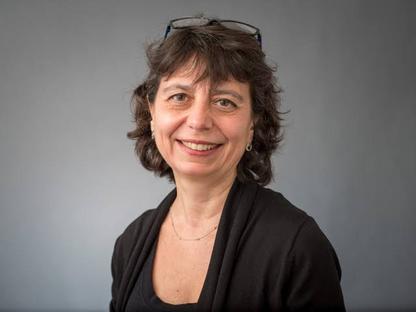
Nouchine Hadjikhani
About our researcher Nouchine Hadjikhani
About Nouchine Hadjikhani
Nouchine Hadjikhani, MD, PhD, is Associate Professor in Radiology at Harvard Medical School, where she directs the Neurolimbic Research Laboratory, and Professor in Experimental Child and Adolescent Psychiatry at the Sahlgrenska Academy, Gothenburg University, Sweden. She is also an Assistant in Radiology at Mass General Hospital in Boston. She is an author of more than 145 peer-review articles and 16 books, book chapters and other publications, and is highly cited, with an h-index of 63 and more than 19,000 citations as of April 2024.
In her work, she has employed neuroanatomy, histology, Positron Emission Tomography (PET), functional Magnetic Resonance Imaging (fMRI), Diffusion Tensor Imaging (DTI), electroencephalography (EEG), magnetoencephalography (MEG) as well as behavioral methods, including eye-tracking, to study the normal and the diseased brain.
For her outstanding research in the field of autism she received Niclas Öberg Life Watch Award in 2016 and The Leenaards Award in 2010.

Research interests
Early in her career study, Nouchine Hadjikhani discovered and characterized the area of the brain that is responsible for color vision with use of fMRI. She then showed that the aura of migraine was a phenomenon similar to cortical spreading depression, in was a ground-breaking paper that has been cited more than 1700 times, and she has since been studying the long-term effects of migraine on the brain.
In the field of autism, she demonstrated that "low level" visual processing is normal in individuals with autism, ruling out a bottom-up deficit, and was also the first to provide data disproving a popular theory stating that individuals with autism are lacking the brain area devoted to face identification (the “fusiform face area”, or FFA).
Her current work is dedicated to understanding the neural bases of the deficits of social instinct in ASD, and to develop neural biomarkers that will help to objectify the effect of therapeutic approaches, both behavioral and pharmacological. Recently, she demonstrated that affective empathy is preserved in individuals with autism. In her current research she is trying to understand the roots of eye-contact difficulties in autism, and how to improve them.
Funding
Nouchine has received the following funding for her research
- VR
- University of Gothenburg
Contact information
2016 Swedish TV4 News: Hennes forskning kan lösa autismens gåtor
2016 Special Nest: Urindrivande läkemedel för behandling av autism?
2016 Special Nest: Pris för autismforskning
2017 Special Nest: Ny forskning: Autism kan bero på annorlunda hjärnaktivitet
2017 Science Daily: Why do those with autism avoid eye contact.
2017 MedicalXpress: Researchers explore why those with autism avoid eye contact
2017 Science Alert: For Those With Autism, Eye Contact Isn’t Just Weird, It’s Distressing
2017 Harvard Medical School News: Ocular Overdrive
2017 The Huffington Post: Why Eye Contact Is So Distressing For People With Autism
2017 Massachusetts General Hospital Research Institute: Brain imaging studies provide new insights into biological basis of behaviors in schizophrenia and autism
2017 AutisMag: Can Your Child’s Eye Movement Help You Visualize their Future Well-Being?
2017 Omaha Herald: Cooking up just the right scare
2018 Les Echos (France): Vers un premier traitement contre l’autisme?
2018 Tagesspiegel (Germany): Fatal Giant Waves in the head
2020 Express.co.uk: Autism symptoms: Study delves into why lack of eye contact is often a symptom of condition
2023 PsyPost: Eye contact avoidance in autism may stem from abnormal sensitivity of brain’s threat processing system, study suggests.
2023 Special Nest: ”För autistiska personer är ögonkontakt näst intill smärtsamt”
2024 Special Nest: Forskning om läkemedlet Bumetanide som behandling vid autism




